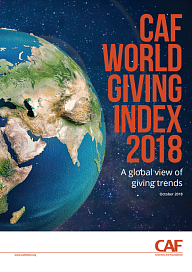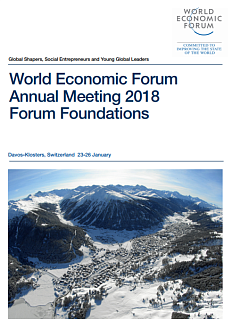The CAF World Giving Index is an integrated index which measures giving behaviors of people in various countries of the world. The scores are calculated based on the results of a series of surveys. As part of the surveys, respondents are asked whether they have done any of the following in the past month:
- donated money to a charity;
- volunteered their time to an organization;
- helped a stranger, or someone they didnt know who needed help.
The CAF World Giving Index 2018 includes data from 146 countries that was collected throughout 2017. According to the report, Indonesia tops the CAF World Giving Index for the first time. Whilst Indonesias three individual giving scores are largely unchanged since last year when the country came in second place, it now moves into the top spot vacated by Myanmar, which has dropped down to ninth place after four years at number one on the Index.
.png)
The proportion of people across the world who donated money in 2017 when the research for this years report was conducted is still at its lowest level since 2013. Donating money has increased amongst those from developed nations (from 40% to 42%), but has declined amongst developing countries (from 25% to 24%). It has also declined amongst the older age groups who have historically been the most likely to give in this way.
Scores of the top 20 Western countries bounce back. Last year, every Western country in the top 20 had a lower CAF World Giving Index score. This decline has now been largely reversed, with most of those same countries now more in line with earlier Index scores before 2016. When taken as a group, developed countries have seen an improvement across all three scores (donating money, volunteering, and helping a stranger).
The giving gap between continents has narrowed in recent years. An upward trend for Africa coupled with a slight decrease for the Americas and a fairly flat trend elsewhere has led to a narrowing of the giving gap between the continents. Excluding Oceania (which in this survey is made up of only Australia and New Zealand) the gap between the lowest scoring continent, Africa, and the second highest scoring continent, Asia, has narrowed to just one percentage point. This compares to six percentage points five years ago.






